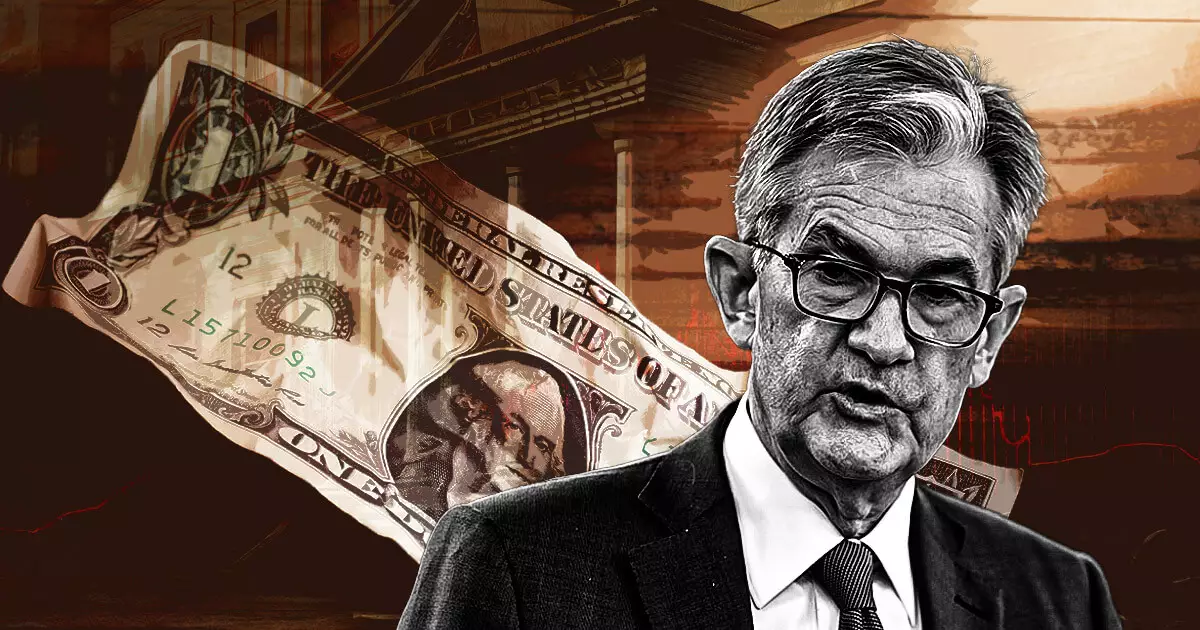Jerome Powell, the Federal Reserve Chair, has taken an assertive stance regarding the regulation of stablecoins, signaling a proactive approach that could redefine the relationship between traditional banking and the burgeoning crypto sector. During remarks made at The Economic Club of Chicago, he highlighted the significance of establishing a robust regulatory framework for stablecoins. This is not just a bureaucratic necessity; it reflects a broader acceptance of the role that digital currencies can play in the economy. In an era where digital assets are increasingly embedded in daily transactions, Powell’s openness to regulation marks a turning point worth scrutinizing.
Powell’s observations underscore a crucial shift in regulatory sentiment. Historically, the approach towards cryptocurrencies, and stablecoins specifically, has been characterized by wariness and hesitance. Yet, Powell’s comments indicate a realization — the landscape is changing, and legislative bodies are revisiting stablecoin frameworks with renewed vigor. For instance, he noted that previous efforts to collaborate with Congress had fallen short, but now lawmakers appear much more willing to engage in meaningful dialogue. This burgeoning interest reflects the reality that stablecoins are not merely a flash in the pan; they hold potential for widespread consumer adoption and should be approached with informed regulation rather than outright restriction.
Consumer Protections: A Pillar of Regulation
In advocating for regulatory measures, Powell accentuated the necessity for consumer protections and transparency. This is a pivotal element of any stablecoin framework, as it aims to safeguard consumers from potential pitfalls inherent in digital assets. The intricate and often volatile nature of this landscape presents challenges that necessitate proactive approaches to protect users. As the Fed considers integrating stablecoins into the financial system, the establishment of robust consumer safeguards must be a top priority, and Powell seems to understand this fundamentally.
The $14 trillion transfer volume in stablecoins last year, which surpassed traditional payment giants like Visa, showcases the staggering growth and penetration of these digital instruments into mainstream finance. However, this accelerated growth must be tempered with appropriate oversight to ensure that user trust is maintained. Powell’s emphasis on transparency indicates an understanding that, without consumer confidence, even the most innovative financial products will struggle to gain traction. His call for a collaborative framework involving lawmakers suggests that he seeks a balance between innovation and the need for regulation — a stance it appears many in the financial community should welcome.
A Direction for Future Financial Innovation
Powell’s statements extend beyond mere acknowledgment of the status quo; they indicate a shift toward a more inclusive financial ecosystem that embraces innovation rather than stifling it. His recognition that the Federal Reserve does not intend to restrict banks from serving lawful crypto clients shows an intent to adapt and evolve with the times. This signals a constructive openness toward digital asset integration, provided that safety measures are adhered to.
As banking regulators and the Federal Reserve tread lightly in this space, they must balance the traditional safety protocols with the unique opportunities that cryptocurrencies offer. Powell’s cautious optimism could pave the way for responsible innovation — a vital component as banks increasingly explore their engagement with digital asset services like crypto custody. By potentially relaxing some of the existing conservative guidelines, Powell seems to be nudging the industry toward a more favorable environment for technological advancements.
The Need for Comprehensive Oversight
One of the most significant challenges in the current crypto milieu is the lack of a unified federal regulatory framework governing stablecoins. Despite numerous legislative proposals, including the GENIUS Act and the STABLE Act, there is still an absence of coherent rules. Powell has pointed to the regulatory complexities that must be addressed, advocating for a nuanced and comprehensive oversight structure that accommodates the unique attributes of digital assets.
This regulatory void has created an environment where innovation can thrive, but it also risks leading to potential instability if left unchecked. As stablecoins continue to entwine with global financial markets, the imperative for a clear regulatory direction becomes even more pressing. Powell’s insights reflect an increasing readiness among U.S. financial authorities to engage with digital asset policy, which may well lay the groundwork for a more structured interaction between the traditional banking system and the world of cryptocurrencies.


















